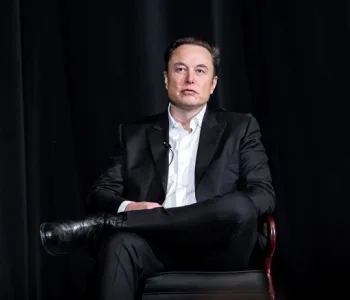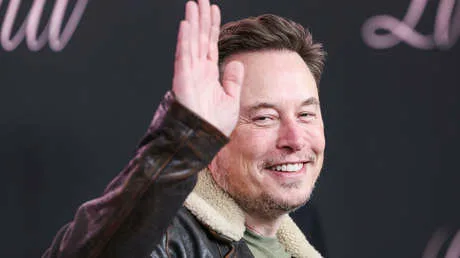doem “One Vote. One Man. One Trillion?”—The Ballot That Could Bend a Market
One ballot. One man. And a number so large it makes national budgets look bashful: one trillion. In a decision that reads like speculative fiction, Tesla shareholders have green-lit a compensation architecture that could propel Elon Musk—already the world’s richest person—toward becoming the first trillionaire in history. This isn’t just about money; it’s about leverage over the direction of electric vehicles, rockets, and frontier AI. Supporters hail it as the ultimate all-in wager on a moon-shot builder who turns impossible into routine launches. Critics warn it centralizes unprecedented power in an individual who can move markets with a midnight post. The real shock isn’t the headline number—it’s the timeline pressure the milestones create just as regulators sharpen their knives. Genius play or dangerous precedent? The answer could redraw the line between visionary leadership and corporate monarchy—and we may already be past it.
From a $56 Billion Blueprint to a Trillion-Dollar Dream
Cast your mind back to the “no salary, only milestones” design that set Silicon Valley buzzing: a ladder of performance tranches that only unlock if Tesla smashes escalating targets for market cap and operational metrics. Investors loved the clarity: no wins, no payout. The rebooted mandate keeps that DNA but stretches the finish line to a horizon rarely written into corporate bylaws. The logic is disarmingly simple: if Musk delivers outlier results, shareholders will already be wealthier before he collects. If he doesn’t, the prize evaporates. Clean. Ruthless. Viral.
Yet hidden in that simplicity is a high-octane accelerant. Tie rewards to meteoric thresholds and you invite a culture of “build fast, test faster, argue later.” That’s gasoline—especially when the factory floor is code, robots, and self-driving systems training on public roads.

The Bet Under the Hood
Beneath the spectacle lies a product roadmap that, if it clicks, would recode Tesla from “car company” to operating system for mobility and energy. Think: robotaxis at real scale, humanoid robots inside and beyond factories, next-gen batteries that chew through cost curves, and an AI stack that fuses vehicles, energy storage, home power, and grid orchestration into one feedback loop. For bulls, the thesis is elegant: stack margins from software and services atop hardware, then reinvest into a flywheel that spins even faster.
But the milestones aren’t abstract. They demand execution under time pressure, and that’s where the physics of ambition meets the friction of the real world: safety validation, regulatory audits, supply chain chokepoints, labor and community buy-in, and the ever-present risk that the next headline isn’t a product launch—it’s a recall.
Red Flags at the Starting Line
Here’s the contradiction that keeps risk officers awake: the very features that make the plan electrifying—speed and audacity—are the same traits regulators scrutinize. Autonomy systems still live under a microscope. A single defect pattern can ignite cascading investigations. Even “fixes” can spark debate if they rely on user behavior or toggles that dull over time. The milestone clock doesn’t stop ticking during these probes; if anything, it ticks louder. One wrong update and the conversation flips from engineering to jurisprudence—and the margin for error shrinks to the width of a hair.

Control: 25% or Somewhere Else?
Musk has been blunt: to build the AI-and-robot future inside Tesla, he wants meaningful voting control—on the order of a quarter of the company. Lose that, and the work could migrate. That’s the part of the story that most hot takes miss. Compensation is the headline; control is the plot twist. A richer Musk is one thing. A Musk with reinforced governance leverage is another. If the company becomes the substrate of global mobility and energy AI, who gets to set the guardrails? A compensation plan can tilt that answer.
Talent or Corporate Monarchy?
Look at the scorecard: reusable rockets, a globe-spanning satellite network, gigafactories stamped across continents, software eating the drivetrain. If you want a generational builder, you can’t price him like a replaceable manager. But governance standards exist for a reason: concentrated power creates blind spots. Board independence, conflict-of-interest firewalls, and shareholder rights aren’t academic niceties; they’re the seatbelts of capitalism. If the prize is big enough to bend markets, the process must be strong enough to resist that gravitational pull. The question is whether this structure upgrades those seatbelts—or quietly cuts them.
The Trillion-Dollar Track: Engine or Fuse?
Play out both futures. In the upside case, Tesla flips the switch on a true robotaxi network, scales humanoid robotics from demo to deployment, and ships an AI-native energy OS. The valuation math stops looking like autos and starts looking like a stack: hardware × software × services × data moats. The milestone ladder becomes a scoreboard of epochal wins, and the payout feels like a footnote in a case study on how to incentivize the impossible.
In the downside case, milestone pressure catalyzes premature launches and brittle promises. Safety controversies metastasize. Investigations drag. The brand shifts from “relentless innovation” to “reckless iteration.” Costly course corrections eat capital and time. Investors discover the difference between visionary compression of timelines and compression fractures in governance.
Why This Touches You—Even If You Never Buy a Tesla
If Tesla turns into the AI backbone of daily movement and power, it reshapes how you commute, charge your devices, cool your home, and price your insurance. Cities would negotiate curb space with algorithms. Utilities would stabilize grids with fleets on wheels. A single CEO—super-incentivized to race the clock—could nudge policy, labor, and infrastructure just by shipping an update. That may thrill you or terrify you. Either way, it affects you.
The Needle’s Edge
So, genius play or dangerous precedent? Maybe both. This is a live-fire experiment in how far a modern corporation will stretch to harness a singular builder—and how much society will tolerate when the reward is nothing less than a different future. The prize is dazzling. The risks are sharp. And the cliffhanger is set: will the milestone clock produce the next leap forward—or the moment we realize the line between visionary leadership and corporate monarchy blurred while we were staring at the number?


